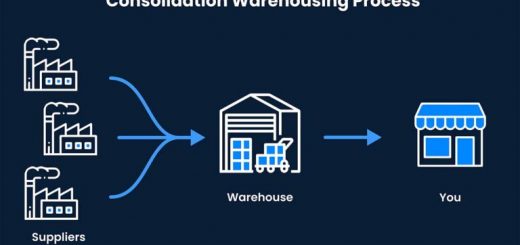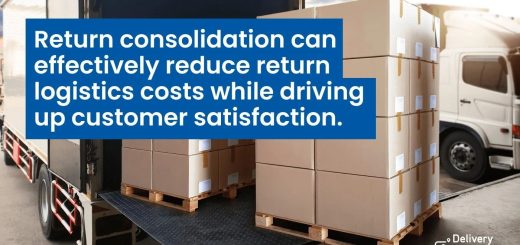The Future of Importing: Smart Consolidated Shipping from China (2025–2026 Outlook)
1. Introduction: Why Imported Consolidation Is the New Standard
In 2025, global trade dynamics are reshaping supply chains fast. U.S. tariffs on China surged up to 145%, leading to a 28% year-over-year drop in container volume from China in May 2025.([turn0search7]turn0search3]) Meanwhile, ocean freight rates from Asia to the U.S. West Coast have plummeted by up to 58% amid overcapacity and rerouting around geopolitical hotspots.([turn0news19]turn0news24])
These shifts mean that importers in Europe and North America are increasingly turning to consolidated shipping—a smart strategy that delivers lower costs, faster customs processing, and better visibility, making it the future of global sourcing.

2. Key Forces Driving the Shift Toward Consolidation
📉 Tariffs & Rising Compliance Costs
The U.S. ended the de minimis exemption for low-value Chinese goods, meaning each parcel now triggers duty or flat fees. Using consolidated shipments avoids hundreds of individual customs entries.([turn0news25]turn0search5])
🚢 Ocean Rates Remain Attractive
Oversupply in major Asia–US shipping lanes continues to drive down sea freight prices, making LCL (Less‑Than‑Container‑Load) and shared-FCL consolidation much cheaper than air.([turn0news19]turn0search18])
🌍 Supply Chain Diversification
Importers are shifting sourcing from China to Vietnam, India, and ASEAN nations—yet consolidated logistics frameworks remain essential for managing mixed-origin flows.([turn0search2]turn0search13])
🧠 Technology & Visibility
Digital platforms, AI, and blockchain are improving consolidation workflows—enabling real-time tracking, automated customs filings, freight audit tools, and predictive planning.([turn0search16]turn0search4])

3. What “Smart Consolidated Shipping” Means in 2025
Smart consolidation combines LCL or air pallet shipments, pre-export inspection, digital documentation, and integrated customs clearance, offering:
- Lower per-unit cost, especially on volumetric shipments.
- Single customs entry, reducing duty risk and paperwork.
- Centralized QC and photo evidence, improving risk management.
- Flexible final delivery, either to fulfillment centers, warehouses, or direct-to-consumer.([turn0search16])
4. Benefits for European & North American Importers
| Benefit | Description |
|---|---|
| Cost Efficiency | Ocean LCL rates often fall below USD 70/CBM—better than fragmented air shipments.([turn0news19]turn0search18]) |
| Faster Customs Clearance | One consolidated entry clears faster than dozens of small parcels. |
| Enhanced Flexibility | You can batch multiple suppliers into one shipment, smoothing inventory flow. |
| Reduced Risk | Less handling, detailed inspection, and insurance reduce damage and claim exposure. |
| Sustainability Gains | Shared container loads lower per-item carbon footprint, responding to ESG pressures. |
5. Real‑World Scenarios: Consolidation Over Air Freight
Scenario A: Fashion Restock—3 CBM of Apparel
- Air freight cost: ≈USD 1,400 with fuel & fees (delivers in ~5–7 days).
- LCL consolidation cost: ≈USD 180 (delivers in ~30–40 days).
Impact: Ocean consolidation saves 80% of freight cost—even considering lead time.
Scenario B: Mixed Electronics Sample Shipment (250kg)
- Air pallet: ~USD 1,300
- Consolidated air pallet: ~$5.50/kg = USD 1,375
Unified entry and insurance make consolidation economical while preserving speed.
6. How Smart Consolidation Works: End‑to‑End Flow
- Suppliers deliver to consolidation warehouse in Shenzhen, Guangzhou, or Shanghai.
- Warehouse QC-inspects, photographs, labels, and packs goods.
- Freight forwarder arranges LCL or air pallet booking.
- Digital documents—Master AWB/B/L, consolidated invoices, packing lists—are issued.
- Export clearance is handled in China; a single customs entry applies at destination.
- Last-mile delivery connects seamlessly to fulfillment centers or consumers.([turn0search16]turn0search11])
7. The Road Ahead: 2025–2026 Import Trends
- Ocean freight logistics will mainstream consolidation as China’s share of global exports dips to ~29%.([turn0search13])
- Blockchain-based traceability is expected to gain traction—helping verify chain-of-custody and expedite customs.([turn0academia30]turn0search16])
- Regulatory complexity increases with tariffs, but consolidation softens compliance costs.([turn0search15]turn0news28])
- Smaller vessels dominate as shipping routes reroute away from Suez and Red Sea chokepoints. This suits diversified consolidation strategies.([turn0news24]turn0search2])
8. How to Prepare: Implementing Smart Consolidation in Your Strategy
- Forecast volume per origin, aiming for monthly consolidation thresholds.
- Select forwarders with consolidation hubs, quality inspection, and customs support.
- Ensure digital documentation systems: AWB/B/L data, invoice audits, tracking platforms.
- Leverage freight audit and claim tools to recover overcharges and maximize transparency.
- Develop hybrid tactics: ocean for high-volume restock, air for urgent replenishments.
9. Challenges to Watch and How to Mitigate Them
- Supplier staging delays: coordinate inbound windows to avoid fragmented loads.
- Port rerouting volatility: especially if Red Sea instability continues—plan alternate routing.([turn0news19]turn0search8])
- Documentation accuracy: ensure proper HS codes and values to meet tightened customs scrutiny.
10. Conclusion: Why Consolidation Is the Future
In 2025 and beyond, the combination of tariff shocks, declining ocean rates, and digital logistics tools makes smart consolidated shipping from China a strategic imperative for importers in Europe and North America. It balances cost, control, compliance, and flexibility—laying the groundwork for resilient, future-proof supply chains.


